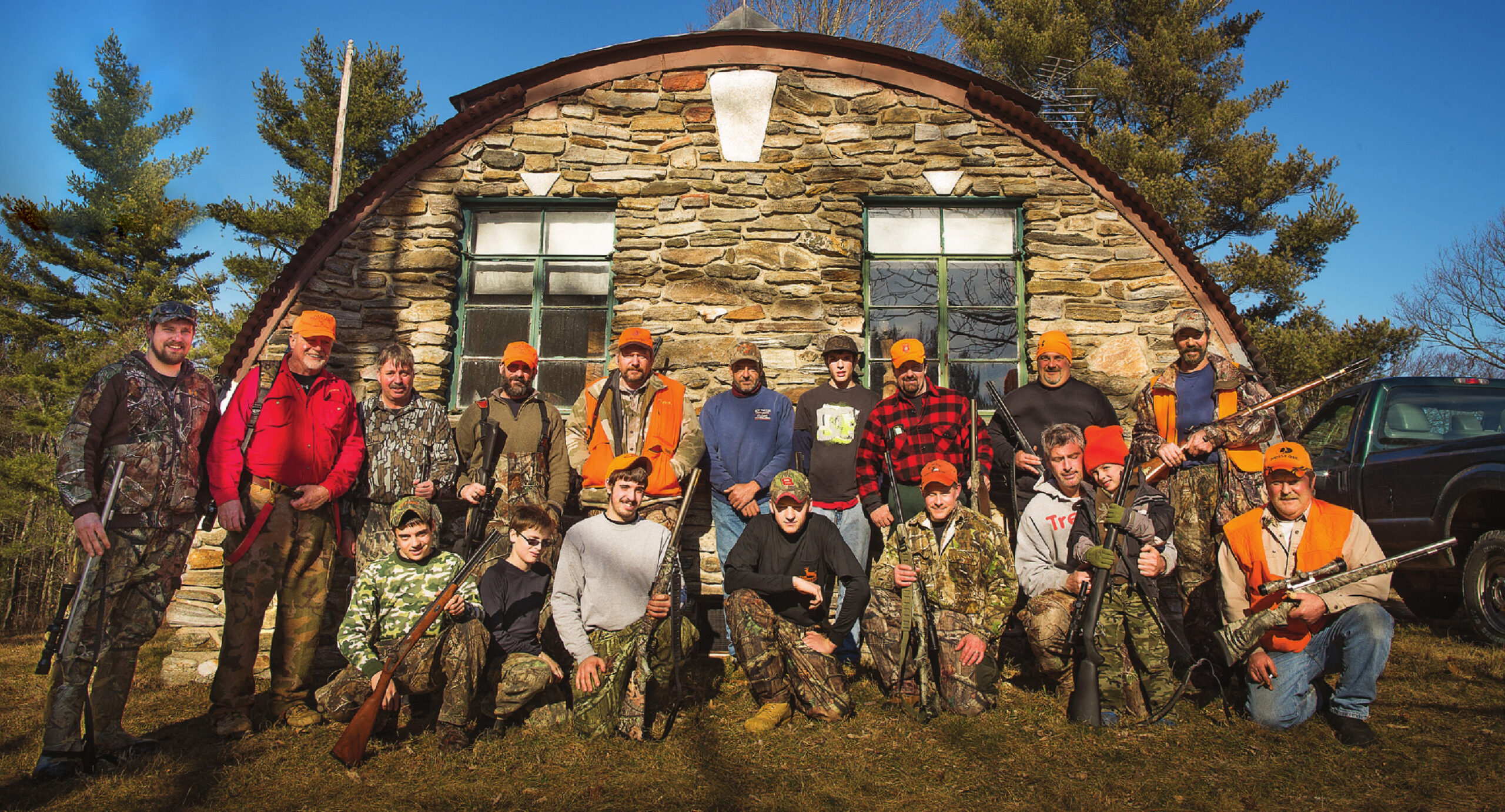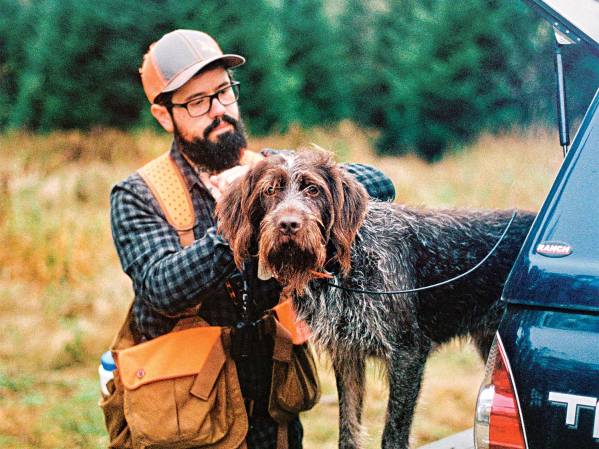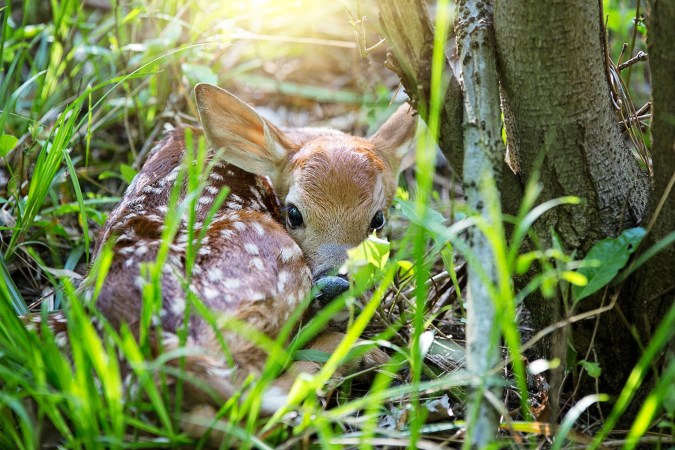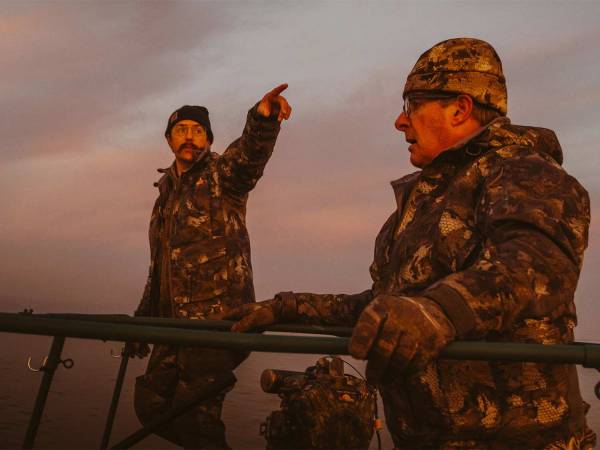Earlier this week MeatEater.com—a site that covers hunting, fishing, and wild game cooking—published a story that criticizes efforts to recruit, retain, and reactivate hunters. Those initiatives commonly referred to as “R3” are really about adding to our ranks of hunters. The MeatEater op-ed, written by Matt Rinella, can be summed up in these two lines: “I’m an outdoorsman who craves solitude, yet my hunting spots get more crowded every year. That, in a nutshell, is why I’m leery of R3.”
For decades, Outdoor Life has supported the effort to mentor new hunters and retain the ones we have. During that time we’ve seen similar sentiment similar to Rinella’s used for opposing youth hunts and even for blocking hunting access in general: “I enjoy solitude while hiking and birdwatching, we can’t have hunters shooting guns in my spots.”
The four authors of the following response all grew up hunting and fishing. We have a combined 140 years of hunting experience between us. We live in the West, Midwest, and Northeast. Every year we hunt private land, public wilderness, busy wildlife management areas, and everything in between. We could be considered the old guard (we know that much of our readership is old guard, too). And we all felt compelled to offer a response to Rinella’s post.

The Case For Hunter Recruitment
By Andrew McKean, Hunting and Conservation Editor
One of the reasons I live where I do, in remote eastern Montana, is because of the abundance of accessible public land in almost any direction.
What could also be found in almost every direction last fall? Hunters.
Lots of Oregon and Washington and Minnesota and Wisconsin license plates on burly pickups. Lots of armed hikers in the hills and coulees. Lots of deer-hunting camps out in “my” prairie. And, I hate to say, more than a few infractions that culminated in calls to the local game warden.
I had to contend with seeing strangers in remote drainages where I’ve never seen another hunter previously. And there was an unsettling tang of competition in the wind, a product of more people chasing the same game I was.
But last year was one of the best deer and bird seasons I recall. Game was abundant, and if I had to hike farther and work harder to find solitude, my reward was the discovery of different spots that I hadn’t been inspired to hunt previously. I killed a respectable public-land mule deer. Not three seconds after I pulled the trigger, one of the largest eastern Montana muleys I’ve seen emerged from the cutbank behind my mortally wounded buck. I filed that information away for next year and hoped to hell nobody would find this place.
I drew a number of conclusions from last fall’s blaze-orange army:
- I expect I was seeing a lot of Covid refugees, out-of-area hunters either laid off from their jobs by the pandemic or cut free of their desks and work stations and able to spend weeks in the field. Federal Covid-relief checks probably funded some of these centerfire vagabonds.
- The good hunting and abundant access that drew me to this place more than 20 years ago has been discovered, thanks to mapping apps like onX, social media, and content producers like myself.
- Committed hunters will find opportunity. I talked to three different nonresidents who said that because hunting is so shitty in their states, they were spending all season in my state. If you have better hunting than your neighbors, then you can expect your neighbors to show up.
- Lastly, most of the hunters I encountered were not casual weekenders (and therefore likely not brand-new hunters). They carried thousands of dollars in gear, between their name-brand camouflage, their tactical backpacks, and their $2,000 rifles. In short, they were conspicuously intentional—almost militaristic—in their pursuit, and were armed with high-end electronics, optics, and precision shooting equipment better suited to the battlefields of Afghanistan than the prairie of eastern Montana.
What didn’t occur to me—then or now—is that there are simply too many hunters in America, and that things would be way better if it was just me and my buddies.
I want to discuss three factors that I see converging in this discussion.
The first is Rinella’s reliance on what we’ve come to realize are outdated and inaccurate metrics that measure hunting participation. As we reported this week, national hunter participation numbers are a mess, so much so that I no longer rely on national data for my conclusions about the numbers of American hunters or their behavior.
That means we’re left with anecdotes. I have detailed mine above, and Rinella certainly has his, which apparently leaves him consternated by seeing strangers in his hard-won special places. I don’t know Matt, but I know that we live in similar places, remote hunting havens of eastern Montana. And I can only guess that we shared similar experiences with the dismaying presence of so many nonresident hunters last fall. I further deduce that Matt’s special places—like mine—are on hard-to-access pieces of public land.
One of the qualities I respect most among the hardest hunters in my community is their ability to shift, to adapt to weather and game distributions and hunting pressure. If the satisfaction of your hunting season is so dependent on solitude, then you’ve been living in an unsustainable fantasy.
This is especially true if your special place is on public land. If you’re reading this, then I’m guessing you’ve been exposed to the public-land purity test. It’s expressed in the Backcountry Hunters & Anglers’ “Public Land Owner” campaign. It’s articulated frequently on MeatEater, the content empire founded by Matt Rinella’s brother, Steve. Just this week, I noticed that Randy Newberg, who hosts the “Fresh Tracks” content platform that celebrates public-land hunting, is peddling his “Hunt Like You Own It” public-land t-shirts. The gist of all these campaigns is that hunting on public land is more praise-worthy than hunting on private land. The corollary is that an animal pursued and taken on private land is somehow less worthy of community accolade because it’s the product of exclusivity.
A quick example. A buddy of mine shot a very nice mule deer buck on the private ranchland of a mutual friend. In his social media posts, he tagged his buck with #keepitpublic and #publiclandowner hashtags. I don’t care where he shot the deer, but it’s telling that our community of hunters has somehow bestowed more value on a deer shot on public land than on private land, despite knowing nothing about the hunt itself.
I’ll return to this private-vs-public divide in a moment. But my final conclusion about Rinella’s piece is possibly the most puzzling.
He suggests that unless we are blood relatives or close buddies, we have no business welcoming prospective hunters into our community, because all those novice hunters bumbling around in the woods and prairies are making life difficult for us experienced hunters.
I couldn’t disagree more.
In my experience, prospective hunters aren’t rank strangers. They’re our neighbors, the parents of our kids’ friends, and co-workers of our spouses who learn that we’re hunters through the original viral content: workplace chitchat. When they reach out to us to ask us about our experiences—those first timid questions about why we hunt, or what we do with the meat, or how hard is it to kill an animal—they’re not itching to get to our secret spots. They’re genuinely curious about the basics of what we do, cued by some genetic or social prompt to seek knowledge and information.
As I said years ago when I started talking about our responsibility as experienced hunters to welcome newcomers into our ranks, if someone asks you to teach them about hunting, and you decline, you’re a self-absorbed asshole.
“If someone asks you to teach them about hunting, and you decline, you’re a self-absorbed asshole.”
Let’s put aside the macro perspective of the necessity to recruit new hunters to keep the system of user-pays conservation solvent, and to perpetuate our American tradition of citizen funding for habitat and wildlife management. It’s the micro perspective that’s rewarding—putting your own hunting priorities aside, even for an afternoon or a weekend.
But consider this: As Rinella and many other folks who have contributed their perspectives to the current state of hunting have observed, we’re living in the fat times of citizen-based conservation funding. The federal Pittman-Robertson (P-R) fund, which is derived from taxes on guns and ammunition and which helps fund state wildlife agencies, has never been more solvent. We have more money than ever for wildlife management, thanks to the rush on guns, ammunition, and personal-defense gear.
Rinella has touched on an important point, one that a healthy P-R fund balance can address. All the attention and pressure on public land has created crowding issues. Partly that’s because many hunters have written off private land as either inaccessible or unworthy of our attention. But I’d argue that the reason public land has taken on such an outsized role in both our imagination and hunting plans is because we have lost our cultural connections to private land.
We no longer have an Uncle Ned or Grandpa Collins with the place in the country, where we could learn to shoot and hunt squirrels. A generation of non-rural hunters who have gravitated to public land by necessity has forgotten how to ask for hunting permission (or they were never taught). That generation assumes all private land is closed to them.
Acre-for-acre, private land tends to hold more game than public land. So, why don’t we lobby for a portion of our P-R funds to go to private-land access programs and use the windfall of new-hunter recruitment to add more land for these newcomers—as well as us veterans—to hunt.
A program that pays for more private land that we can open to public hunting might help keep competitors out of Rinella’s secret spots, and who knows? Maybe he’ll find a secluded new place to hunt.

It’s About Building a Stronger Culture
By Alex Robinson, Editor-in-Chief
This is all pretty simple. The traditional hunting community has a decision to make: We’re either going to welcome some new folks into “our” places and teach them our customs and ethics (and certainly learn a thing or two along the way); or we’re going to close access to our tribe and let our hunting tradition die with our kids, or maybe their kids.
Outdoor Life editors and contributors, along with many others (including MeatEater), have covered this ground already. It feels almost shameful to have to do so again now, but here we are: We need hunters of different backgrounds, ages, ethnicities, and political beliefs. And we need those folks to be all in. I’m not talking about just having an awareness of hunting; I mean shooting a limit of squirrels, hunting the backcountry, and ringing steel at shooting ranges. We need a diverse coalition of folks joining conservation orgs, bringing new perspectives to the conversation, and raising hell with legislators and administrators over our hunting rights.
Our hunting culture must grow to survive. America is increasingly racially diverse, but the population of hunters in this country is still predominately white and predominately male. This is precisely why the old-school model of hunter recruitment (which means fathers teaching their sons to hunt) is no longer viable to fully sustain the tradition. It very obviously leaves too many people out.
While we can argue about the overall effectiveness of the R3 movement (it is failing in some ways), you cannot argue against the fact that the R3 effort is at least attempting to open hunting to the folks—women and people of color—who have been shut out for way too long.
To do so would be ignoring the successful hunter mentoring work being done by programs like Becoming an Outdoorswoman, Pheasants Forever Hunting Heritage, John Annoni’s Camp Compass, National Deer Association’s Field to Fork, and the work of so many R3 coordinators, state agencies, and other volunteers pulling long hours for little or no pay. It seemed for at least a moment the R3 effort and the hunting industry at large had finally turned the corner on welcoming women and minorities into its ranks. Is MeatEater now honestly proposing that we stop supporting programs like these because the new hunters are making the old hunters grumpy?
In a lot of ways, hunter recruitment has evolved. Instead of attempting to convince random people they should try hunting, there is more effort in reaching the folks who have always wanted to hunt but never saw a way in. As an industry we’re just finally starting to reach women and minorities who weren’t sure that they belonged as hunters—because they’d never been invited. I know this because I’ve volunteered in these R3 efforts. I’ve helped teach two immigrants to learn to hunt. Both were initially strangers I met through an R3 program, both are now friends and successful newcomers to our hunting community.
“Other hunters aren’t competition, they’re kindred spirits.”
Ask almost any R3 coordinator about what the limiting factor is for their program, and the answer won’t be eager participants; It will be volunteer mentors. There’s no shortage of folks who want to learn to hunt (largely thanks, in my opinion, to the “MeatEater” show on Netflix), just a shortage of mentors willing to teach them.
So it’s a job for us, the veteran hunters, to welcome and teach all the new folks who are eager to learn and are willing to put in the work. Not because it’s charity for them, but because it’s good for us. At its very best, hunter recruitment mixes up life experiences. It brings together rural and urban perspectives. It knocks down racial barriers. Teaching a new person to hunt makes the whole experience more challenging, meaningful, and fun.
I mean, come on. How many big bucks do you have to kill out there in the lonely wilderness before finally looking up from the gut pile and wondering, Is this…it?
I’ll offer this one final thought: Other hunters aren’t competition, they’re kindred spirits. True hunters, whether they’re veterans or newbies, comprehend the principles of conservation. Most know the basics of firearms safety and feel the responsibility of gun ownership. They understand nature. Not the sterilized national-park-tour type of nature, but the real flesh-and-blood-circle-of-life kind of nature. They get that we humans are very much part of that process. When I look at the state of this country, and our society, I think it’d be useful to have a few million more folks like that roaming around.

Hunting Is Not a Zero-Sum Game
By John B. Snow, Shooting Editor
I only had to read the first sentence of Matt Rinella’s story on why recruiting new hunters is really a bad thing in order to see where it was headed. Two thoughts occurred to me. Either it’s a cynical ploy by the MeatEater crew to distance themselves from the “Westie/locavore” trend they’ve worked so hard to build up over years, and which now is viewed with increasing derision by so-called “real” hunters. Kind of like when someone stops hanging out with their friends in band after realizing the rest of the school thinks they’re dorks. Or it’s an honestly held perspective that the thing that’s ruining hunting is other hunters.
Alright, I’ll bite and give them the benefit of the doubt that it’s the latter.
In that spirit—gimme a damn break.
When I was younger there were times when I’d get annoyed to see someone standing in my favorite steelhead pool—usually right on top of the fish—or when I’d tally up what I’d consider an unreasonable number of trucks parked at a trailhead or river put-in.
But I got over that a long time ago.
For one, I realized that the future of the outdoor sports that have been such a deep part of who I am hinges on having lots of other people participate in them. That’s the highfalutin reason I don’t mind seeing other sportsmen and women when I’m afield.
The other, more practical, lesson I’ve learned is that encountering other hunters and anglers doesn’t mean the game has disappeared, or that my ability to punch a tag or hook up is any less.
Two seasons ago I was hunting public land in Colorado with my buddy Cody. We had hiked about a mile up a creek drainage to get to a bowl we thought might hold some elk.
Once we hoofed to our promised spot, we crested a rise and saw the blaze-orange back of another hunter posted up in some deadfall, looking down and across the drainage. We never saw his tracks, so he’d obviously taken an even longer route to get there.
He had no idea we were behind him, so we backed out and looped around deeper into the mountains, leaving him to his solitude.
“I’ve learned to fish and hunt around other people. It’s a skill like any other we need to master.”
When I was less experienced, that encounter might have left me discouraged. But we hadn’t gone more than 300 yards from our friend when we turned a corner and spotted a dozen elk in a small pocket, pawing for grass through the snow. Mixed into the herd was one really nice bull.
The sound of Cody’s shot surely came as a shock to that other hunter, though we never saw him again.
The point is, I’ve learned to fish and hunt around other people. It’s a skill like any other we need to master, unless you only hunt vast tracts of private ground by yourself.
So, to answer the question that Rinella posed in his first sentence, no, I don’t hope to see another hunter in front of me when I arrive at a favorite spot. But neither do I get angry about it. And, in fact, there’ve been plenty of times where I’ve had great conversations with strangers I’ve met in the woods even if they are in “my” honey hole. Does it lessen my chance of filling a tag? Maybe. But I wouldn’t want to give up those experiences either.

Fewer Hunters Might Mean Better Deer Hunting, But At What Cost?
By Gerry Bethge, Deputy Editor
I’ve been fortunate enough to have hunted the same area of southern New England for more than 40 years. Over that time, I’ve seen hunter numbers decline, I’ve lost some close hunting buddies, and I’ve tried to mentor innumerable new sportsmen and women. I’ve also seen my deer hunting get much better. In fact, I can remember the very year that it did.
“There’s a stud, huge, double droptine buck at your house,” my buddy Tommy told me a week before the opening day of firearm season in 1997. “He’s a pig and I’ll tell you exactly where you need to be on opening morning to kill him.”
Tommy was slightly prone to hyperbole, but the agitation in his voice made me think that, well, he’d seen a pretty good deer eating apples in my yard. Considering the history of our inferior-quality New England whitetail hunting, however, I had much cause for trepidation.
“Well, why don’t you want to hunt him then?” I asked.
“Cause I’ve got two better ones that we’re gonna kill, bro,” he said. “They’re on state land. Easy-peasy.”
That was two years after hunter numbers in Massachusetts dropped precipitously, according to the Massachusetts Division of Fisheries and Wildlife. Tommy and his crew did, in fact, kill those bucks. I saw the double droptine buck precisely where Tommy thought that I would, and missed him—seven times (I’ll not get into the details now). Boone and Crockett-quality bucks had never showed up in our woods. And now they were here. But at what cost?
The Old Days
My very first opening morning of deer season was in 1977. There was no way to count the incredible number of shots fired within close proximity to my stand that morning. There was also no way to truly count the number of hunters who cruised past me, posted near me, or drove down the backwoods road that I was within eyesight of. The day was hugely frustrating in that regard—especially for a kid. By the time some guy rattled off five rounds and hollered, “There are nine of them!”…I’d had enough.
Back at camp, though, two bucks—a six and a four-point–lay in front of the garage. Deer liver, onions, and bacon were being sauteed on the kitchen stove. My Oma tended to the victory meal while we tended to the deer. We told hunting stories long into the night—far later than a teen had any right to stay up. It was magical though: the blaze-orange clothing drying by the wood stove, handwarmers primed with fluid sitting on the counter, the boots, the mud—all of it.
We killed one more deer that season–a mature doe. No one really much cared, though. It was a deer. It was meat. It would be shared equally among our families.
So, I’ll be honest. When it comes to killing big bucks, my seasons now are much better thanks to the fact that there’s less hunting pressure in my area. There are inarguably fewer deer hunters in my neck of the woods. But when I think back to those early days of the full camps and all the memories that went with them, I know that those were the experiences that forged me into a lifelong hunter. Throughout the decades, my buddies and I have had a singular—yet, unspoken—goal in mind. We have all included our children and many adults in our hunting camps. We’ve introduced both locals from town and New Yorkers to hunting. Some have embraced it all. Others have not. The end game remains the same for us: Take someone new outdoors. It could change their life, and yours, for the better.













